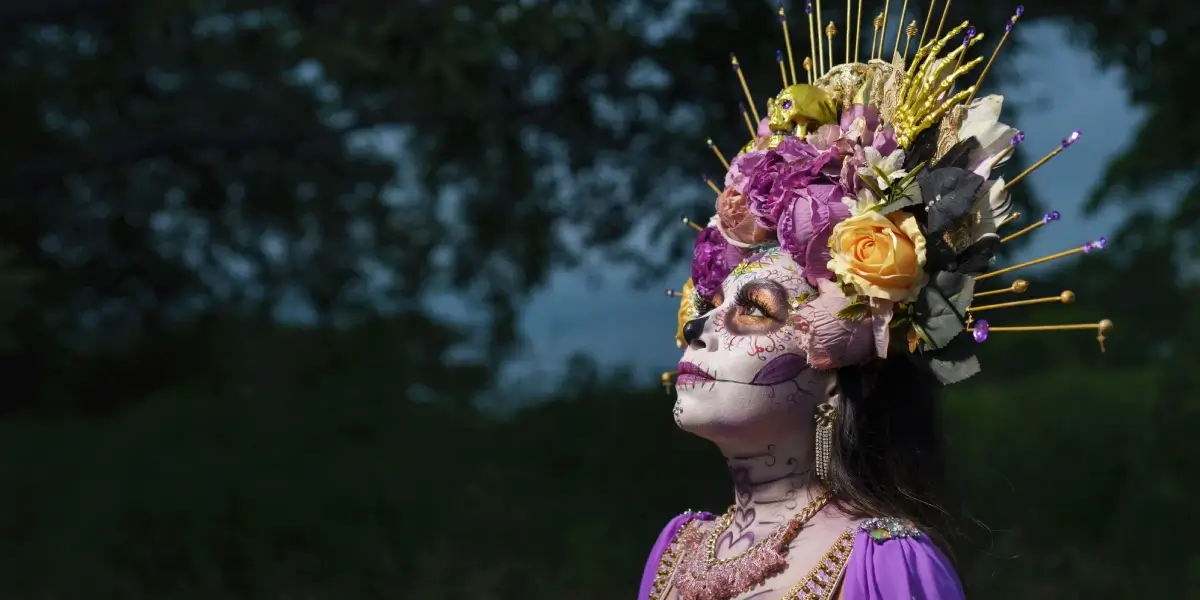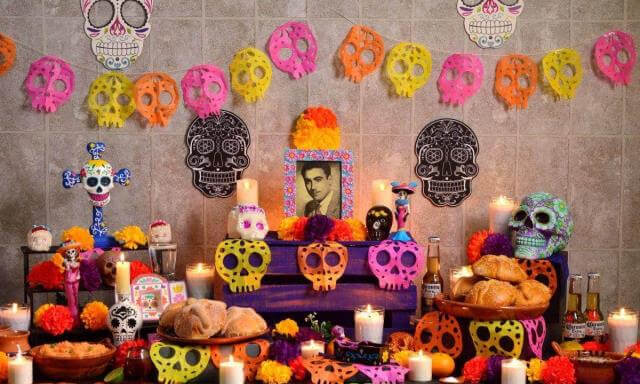
SOLARIS TIPS January 21, 2025
The day of the dead is one of the greatest traditions in Mexico, and although it is a tradition in Latin America, Mexico stands out for its color and variety of expressions throughout the country.
The day of the dead takes place during the first two days of November; We dedicate the first day to "the Holy Innocents" or saints day, that is, to children, and Day 2, the most popular, is dedicated to adults.
The Day of the Dead Tradition
The Dead Tradition or “dia de los muertos” has it that on those days, the dead receive the invitation to return from beyond to visit, live together and let their families and loved ones know they are well.
"What a beautiful tradition to remember the dead and at the same time, celebrate our life knowing that someday, we will be the ones to be remembered."
The Origins of the Day of the Dead
This celebration has its origins in pre-Hispanic cultures, mainly Aztec and Mexica. For the Aztecs, death was not an end, it was just another state or stage of life where the dead could return from the place where the dead go (The Mictlán)
With the arrival of the Spaniards in Mexico, the traditions merged with Catholicism, giving the celebration that is currently known.
This celebration continues to preserve the pre-Hispanic essence of the cult of the dead. There are iconic places to get to know the tradition closely, for example, Xochimilco and Mixquic, places very close to Mexico City.
In the state of Michoacán, the most important ceremonies are those of the Purépecha Indians of the famous Lake Pátzcuaro, especially on the island of Janitzio. Equally important are the ceremonies that take place in towns on the Isthmus of Tehuantepec, Oaxaca, and in Cuetzalan, Puebla, where to enjoy the beauty of the offerings.
What elements make up the Day of the Dead offering?
The Day of the Dead offering comprises a series of elements placed on the floor or table with several higher levels, where cempasúchil flowers (marigold flowers), dead bread (typical bread of the date), candles, drinks, fruits, food, tobacco, or any other object that was appreciated by the deceased.
Two elements that cannot be missing in a typical offering are a copal censer to purify the place where the deceased will stay for the night and a path with cempasúchil flower petals from the street to the offering so that the deceased do not lose their way. Some people put an ash cross on the floor as an extra detail.
Some people decorate their offerings with colored paper with “La Catrina” motifs (skulls from Guadalupe Posadas) or candy skulls that have a small piece of paper on their forehead with the name of the person to remember. Besides the altar in the house, it is customary for the family members to visit and decorate the grave where your loved one rests. There they offer food, flowers and candles are lit too. They also offer masses for all saints and for the dead.
Who is La Catrina and what represents
 Surely you already know her without knowing her name: La Catrina is a female skeleton dressed elegantly and with an enormous hat with feathers. It’s believed that its origin dates back to Aztec culture. Mictlantecuhtli was the goddess of death who protected the deceased and helped them follow their path through death. From there it would have passed to a more modern version with the Spanish, reaching the version we know today.
Surely you already know her without knowing her name: La Catrina is a female skeleton dressed elegantly and with an enormous hat with feathers. It’s believed that its origin dates back to Aztec culture. Mictlantecuhtli was the goddess of death who protected the deceased and helped them follow their path through death. From there it would have passed to a more modern version with the Spanish, reaching the version we know today.
The Catrina we know today was first drawn in the early 1900s by artist José Guadalupe Posada, who was a political cartoonist who satirically drew and made paper prints of skulls (skeletons) to remind people that in the end, we all would end up dead.
There are stories that tell that the elegance of Catrina's dress is linked to the aspirations of Mexicans to see themselves as rich, trying to be something they are not and that no matter your society, race, creed, rich or poor, we will die. The most popular saying of Guadalupe Posadas was: "Death is democratic and touches everyone equally" very true! If you want to know more details, you can read it here: La Catrina as a symbol of Day of the Dead.
What meaning do the objects of the offering have?
The objects in the offerings have different meanings depending on the region where it is placed, but throughout Mexico, these elements are the ones that remain:
- Purple chopped paper = Christian mourning.
- Orange chopped paper = Aztec mourning.
- Cempasúchil flowers (marigold flowers) = The flower of Mictlán (from Nahuatl: cempoalxóchitl = flower with 20 or more petals).
- Four candles = show the four cardinal points.
- Incense = Ward off evil spirits and purifies the environment.
- Crosses of ashes = purification of the spirit of the deceased.
- Jug of water = in case you arrive tired from the road.
- Hand-washing bowl = to wash before eating from the offering
- Prepared Food = It is to rejoice the deceased with his favorite food, including seasonal fruit.
- Alcoholic drink = Your favorite alcoholic drink to make you leave happy
- Pan de Muerto (dead bread) = The bread symbolizes the mortal remains of the deceased, the sphere that is in the upper center of the bread symbolizes the skull, the protruding edges of the bones, and in its flavor orange blossom, the memory of the deceased.

As you can see, Mexican culture is very rich and extensive, we could continue to delve into the wonder of this celebration in Mexico, but the best way to get to know it is to experience it first-hand, at the Royal Solaris Hotels we have special programs where you can learn more about the tradition and enjoy an unforgettable vacation. We are waiting for you!
PREVIOUS POST NEXT POST